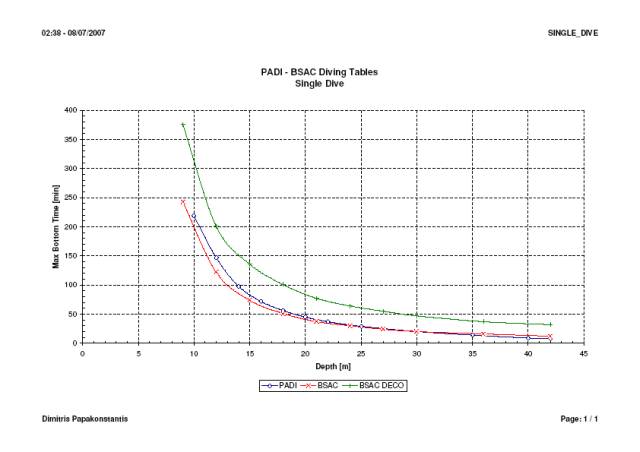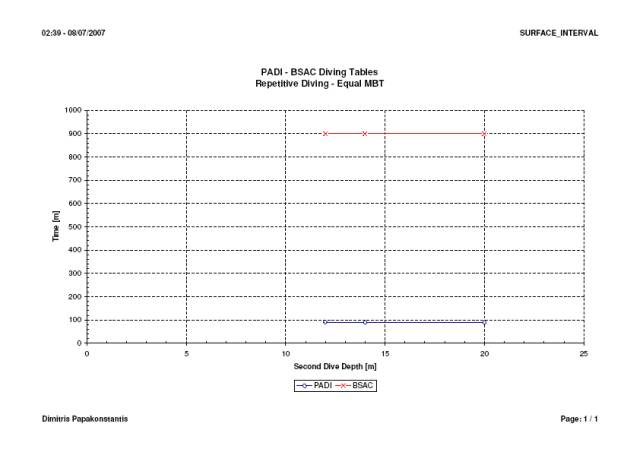Diving Costs
Diving Schools
Introduction
There seems to be an ongoing battle between different diving
schools and in particular between
PADI
and
BSAC.
I don't know if this is the case in France with
CMAS
and
PADI
but since I started diving (with
PADI
) people were taking the mickey
out of me (regardless of their nationality or their involvement with diving)
for diving with
PADI.
Consequently I tried to find out what is the
difference, what is the "The Dark Side" of diving and unsurprisingly I was
not alone in this quest. Loads of times divers (
PADI,
BSAC
or
crossovers) have asked "what's the difference?", "who is Better?", "why go
PADI
?", "why go
BSAC
?". Needless to say I have not found
the answer so far. Obviously like everything else there are advantages and
disadvantages. Personally I know that if I had the time, the money
and the means necessary I would be doing all of them!!! and that's not just
BSAC
and
PADI
its all of them
CMAS,
SSI,
TDI,
ANDI
ALL!!!
Scope
This web page is a try to answer the question of: "what is the difference
between all these diving schools?". The truth is that for the time being
I will focus on the differences with
PADI
and
BSAC
but I hope that in the, near,
future I will be able to include other schools as well.
Criteria
One way I see in comparing diving schools is by the diving
tables that they are using. Since I am a
BSAC
diver I have
BSAC
'88
tables and I can use them! Also as a
PADI
diver I can use
the
PADI
Recreational Dive Planner.
While searching the web for more information I came across other
schools diving tables (
USN,
CMAS,
NOAA,
etc).
I have not been trained to use them but their use doesn't look like
rocket science to me. Having said that I must state that I wouldn't
dive with these tables and I wouldn't suggest to anyone to dive with
tables that he (or she) hasn't been trained to use.
The following Criteria are going to be used for our assessment:
Criteria
- Diving Tables - Single Dive
- Diving Tables - Multiple Dives
- Decompression Diving
- Miscellaneous
Criterion 1 - Diving Tables, Single Dive
The following graph is a comparison of Maximum Bottom Time (MBT)
allowed when diving using
BSAC
and
PADI
Tables. As you
can see both tables give the same MBT. For reference ONLY the
BSAC
MBT for
Decompression Dives is shown.
Click here to see the dives used for this graph
So in terms of MBT of First Dive it seems, to me, that there is no difference between either set of diving tables.
Criterion 2 - Diving Tables, Repetitive Dives
The second step is to investigate repetitive diving. Assuming
the first dive to be the same (Max Depth and Bottom Time) and the same
Surface Interval (SI), then MBT for divers using
PADI
tables
is three (03) times LONGER than for divers using
BSAC
tables, as shown
on the table below.
This time we will assume a buddy pair. One of the pair will be diving
using
PADI
tables and the other using
BSAC
diving tables.
As we have already discussed the first dive will be the same.
Now after any given time the diver using
BSAC
has to wait TEN (10) times
more than the diver using
BSAC
in order to do the second dive together.
Consider the following examples (Example 1 & 2)
| Example 1 | Example 2 |
|---|---|
|
Both divers have their first dive together Dive 1: 00:23 @ 25m they both want to do the following dive Dive 2: 00:35 @ 20m SI required for diver using PADI diving tables: 01:30 SI required for diver using BSAC diving tables: 15:00 |
Both divers have their first dive together Dive 1: 00:14 @ 35m they both want to do the following dive Dive 2: 00:35 @ 20m SI required for diver using PADI diving tables: 01:30 SI required for diver using BSAC diving tables: 15:00 |
The results of this exercise are shown on the following table:
Results
The comparison between the BSAC and PADI diving tables shows the following:
- For the First Dive both Diving Tables give the same MBT
- For the Second Dive, assuming the same SI, BSAC diving tables give shorter MBT than PADI diving tables
- For the Second Dive, assuming the same SI, PADI diving tables give longer MBT than BSAC diving tables
- Planning Repetitive Dives with PADI diving tables requires shorter SI than using BSAC tables
- Planning Repetitive Dives with BSAC diving tables requires shorter SI than using PADI tables
Discussion of Results
Danger for Decompression Illness (DCI) increases significantly
with repetitive diving. This is why for Single Dives
both schools tables give the same MBT. The reduced MBT that
BSAC
suggests for the second dive compared to the longer one of
PADI
provides extra safety in terms of DCI. The relationship between
Surface Interval (SI) and MBT is not clear since for the same
SI the
BSAC
tables give 1/3 of the MBT that
PADI
tables allow
while for the same MBT the
BSAC
tables require 10 times longer
SI when compared to
PADI
tables.
Conclusions
Diving using
BSAC
tables without Decompression stops gives less diving
time than if diving using
PADI
tables. Diving using
BSAC
tables
requires longer Surface Intervals than if diving using
PADI
tables.
The higher safety factor used for diving using
BSAC
tables reduces
the chances of DCI.
PADI
relaxes the safety factors to allow for
longer Bottom Time (BT) and by doing so increases comparatively
the chances of DCI.
Diving using
BSAC
'88 tables for decompression dives extends the BT to
longer times than
PADI
Recreational Dive Planner
(Non-Decompression Dives). Decompression dives increase the BT and
also the chances of DCI.
All the above work is based on the assumption that there are divers
that are planning their dives using Diving Tables and that
they actually execute their dives as planned. In reality tables are
used mostly for training purposes while during the dive the diving
computer dictates MBT and decompression stops. Again there are advantages
and disadvantages of this approach but it is not in
the scope of this page to examine that (I am planning another page
dedicated to this argument).
It is useful to note at this point that Diving Tables are application
specific and purpose made. Although the calculations are not shown
here I feel that I should say that it makes sense to have different
diving tables for different application. The risk of DCI is related
to the dive performed that is Max Depth and Bottom Time. But it is also
related to the physical condition of a diver. USN diving tables
were meant to be used by young, well trained and in very good physical condition
divers where as
BSAC
diving tables are intended for use by
Recreational divers quite often older and not necessarily that fit. I would also
expect to find that USN diving tables were compiled using male
divers mostly (I don't think there were many female divers in the US Navy at the
time!) and it is known that different sexes have different response
to DCI.
Further Work
This work, so far, has dealt only with the comparison between
BSAC
and
PADI
Diving Tables. The following calculations and considerations
have to be included:
- Input from Diving Computers for MBT and SI on the same sample dives investigated
- The Comparison of other Diving Schools Diving Tables
Dimitris


